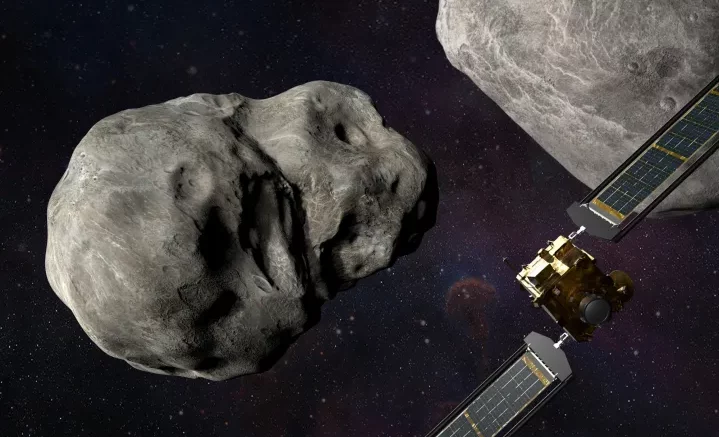In September 2022, NASA’s Double Asteroid Redirection Test (DART) spacecraft deliberately collided with the asteroid Dimorphos, potentially resulting in a “global deformation” of the celestial body, as suggested by recent research findings.
The DART mission aimed to conduct a real-world experiment to test asteroid deflection technology, assessing whether a kinetic impact, such as crashing a spacecraft into an asteroid at 13,645 miles per hour (6.1 kilometers per second), could alter the trajectory of a celestial object in space. Dimorphos, a moonlet asteroid orbiting a larger parent asteroid named Didymos, provided an ideal test subject due to its size, which is comparable to asteroids that could pose a threat to Earth.
Since the impact event, astronomers have utilized data from ground-based telescopes to determine that the DART spacecraft indeed altered Dimorphos’ orbital period by approximately 32 to 33 minutes. However, understanding the composition of asteroids is crucial for developing effective deflection techniques, as different types of asteroids—ranging from hard, stony ones to rubble piles—require distinct approaches.
Before colliding with Dimorphos, the DART spacecraft transmitted detailed images of the asteroid’s surface, aiding researchers in understanding its formation process. Follow-up observations using ground- and space-based telescopes, along with the Italian LICIACube satellite, captured the aftermath, revealing the emergence of a substantial debris plume following the impact.
Further investigation, incorporating data analysis and modeling, sheds light on the impact’s effects. Instead of creating a simple crater, the collision reshaped Dimorphos entirely, as indicated by a recent study published in Nature Astronomy. The findings suggest that Dimorphos, likely a rubble pile composed of rocky material from the Didymos asteroid, experienced significant transformation due to the impact.
To simulate the impact, researchers employed the Bern smoothed-particle hydrodynamics shock physics code, a computational tool designed for modeling impact events. By running numerous simulations and adjusting various parameters, the team identified the scenario that closely matched the observed data.
The results indicate that Dimorphos’ low gravity and weak cohesion allowed the impact to cause extensive deformation, resulting in the asteroid’s crater expanding to encompass its entire shape. This insight prepares astronomers for future missions, such as the European Space Agency’s Hera mission, which aims to observe the aftermath of the DART impact and further investigate Dimorphos’ composition and transformation. Through collaborative efforts and advanced modeling techniques, researchers continue to unravel the complexities of asteroid dynamics, essential for enhancing planetary defense strategies against potential threats.

